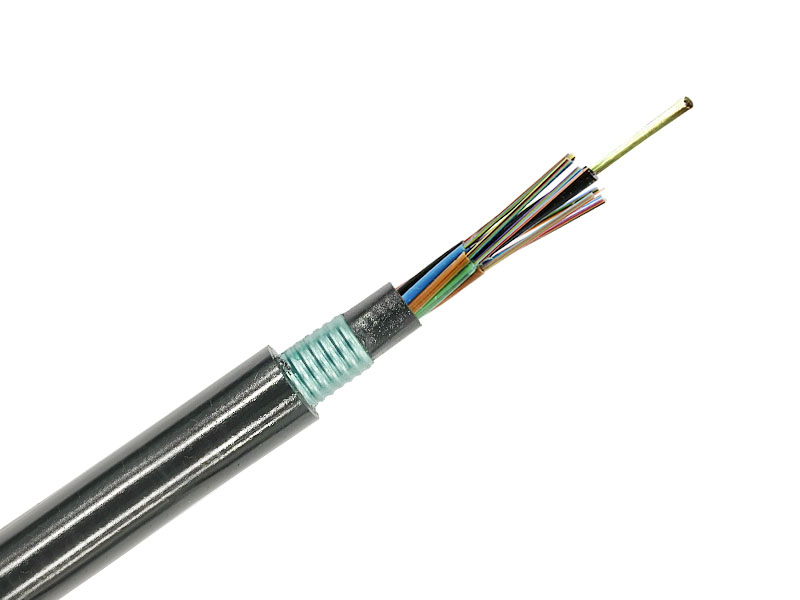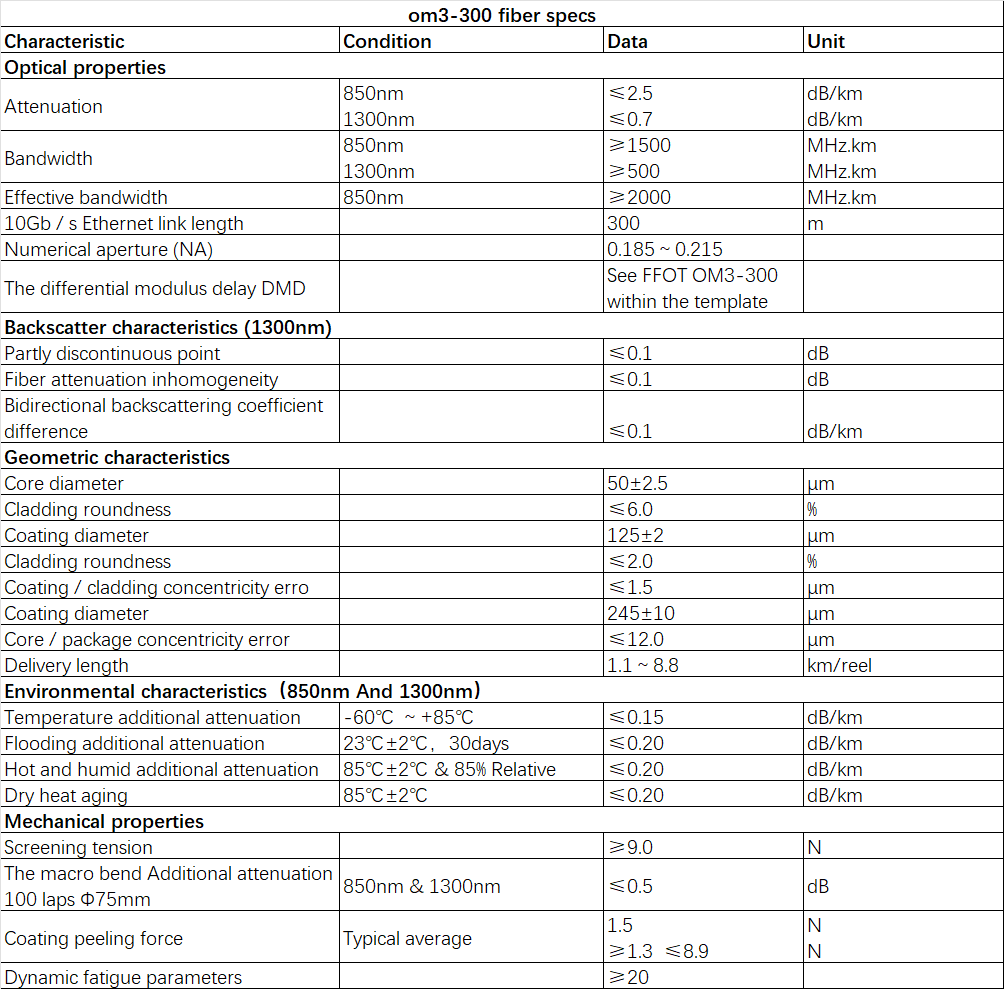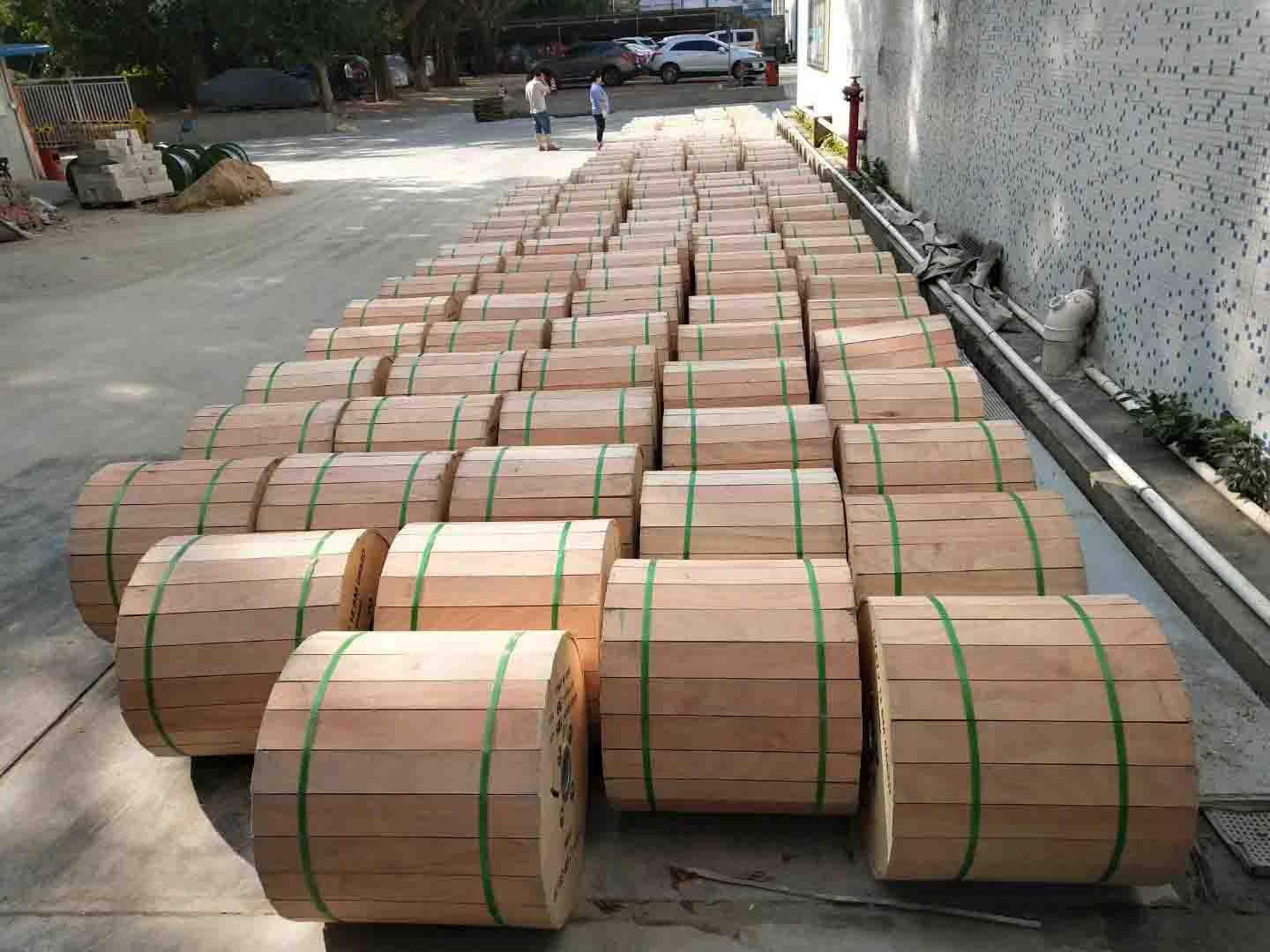
GYFTY53 type optical cable is an outdoor optical cable for communication with non-metal reinforced components, loose tube stranded filled type, polyethylene inner sheath, and steel-polyethylene bonded outer sheath.
Laying method:Buried directly, pipeline
Erection Method:Overhead, pipe laying and direct burial
Standard:Comply with stand YD/T 901-2009 as well as IEC 60794-1
Temperature Range:Storage and operation::-40C ~ +70C;Erection:-15C ~ +60C
Bend radius:Static 10 times the cable diameter,Dynamic 20 times optical cable diameter
Application:Core Network, Metropolitan Area Network, and Access Network ,Applicable to long-distance communication and inter-office communication Outdoor Optical Cable
Fiber Type:G652D;G655C;G657A1;G657A2;50/125;62.5/125;OM3-150;OM3-300;OM4 As Options

1、Full-section water-blocking structure ensures good water-blocking performance
2、The loose tube is filled with special grease to provide critical protection for the optical fiber.
3、Polyethylene sheath ensures that the optical cable has good UV resistance
4、Steel-plastic composite tape armoring strengthens the tensile and compressive properties of optical cables
5、Product service life is more than 25 years



Direct buried optical cable is a communication optical cable laying method. This kind of optical cable is armored with steel strips or steel wires on the outside and is directly buried underground. It is required to resist external mechanical damage and prevent soil corrosion.
1、The cross-sectional size of the optical cable trench should be according to the requirements of the construction drawing. The bottom width changes with the number of optical cables. Generally, it is 1 to 2 optical cables, and the trench bottom width is 30-1000px; for 3 optical cables, the trench bottom width is 1375px; 4 The bottom width of the optical cable trench is 1625px. The width of the trench top is approximately the bottom width + 0.1 times the burial depth. Optical cables laid in the same trench must not cross or overlap. The optical cable trenches on the two straight sections must be as straight as possible. When there are obstacles on the straight lines, they can be bypassed, but after bypassing the obstacles, they should return to the original straight line. The bending radius is not less than 20m. When laying optical cables with a slope greater than 20 degrees and a slope length greater than 330m, it should be laid in an S-shape or handled according to design requirements.
2、Ditch bottom treatment: The bottom of the ditch in general areas should be filled with fine soil or sand and gravel and compacted. After tamping, the thickness is about 250px; in areas with weathered stone and gravel, about 125px thick mortar should be laid first, and then filled with fine stones or sand. To ensure that the optical cable is not scratched by the sharp edges of gravel; if the outer sheath of the optical cable is steel wire armored, mortar can be dispensed with; in areas with soft soil that is prone to collapse, wooden piles and wooden blocks can be used as temporary wall protection .
3、The laying and direct burial of optical cables are mostly done in the wild. Mechanical laying can only be done when the route is along the road. Mechanical laying uses trucks or flat cars for reeling and unwinding lines for traction. The optical cables are first installed in coils by cranes or lift forklifts. Enter the vehicle and wind up the frame, remove the small cutting plate or metal disk cover on the optical cable drum, and the commander should check that the preparations are in place before starting the deployment. The motor vehicle should move forward slowly, and at the same time, use manual hands to pull the optical cable out of the cable drum, place it gently on the edge of the ditch, release it for 20m, and then put it into the ditch manually. There are currently very few conditions for using mechanical traction for direct burial laying. Generally, manual laying is required. There are two ways of manual laying. One is the straight-line shoulder-carrying method (note that no matter what method is used for laying, optical cables are not allowed to be dragged on the ground. ), the distance between personnel is small, and the commanders act in unison; the other is the manual lifting method. First, the optical cables are coiled into a figure of 8, and each 2KM optical cable is piled into 10 figure 8s. Each group is bundled with 6 groups with leather wires. The group consists of 4 people lifting the cable, and each group is assigned one person to coordinate. The front of the first group is guided by 2 people. During deployment, each group lifts and moves forward along the ditch under unified command.
The laid optical cables must be inspected and measured before backfilling. Visually check whether the outer sheath of the optical cable is damaged, and conduct a ground insulation resistance test on the metal-sheathed optical cable. Generally, use a megohmmeter and optical fiber for a light test. After confirming that the optical cable is not damaged, backfill the soil. First, backfill 15 cm thick thin It is strictly forbidden to push stones, bricks, or frozen soil into the ditch when it is filled with soil or sand. When backfilling, people should be sent into the ditch to step on the cables to prevent the backfill from arching the optical cables. When there is water in the ditch, in order to prevent the optical cables from floating The optical cable can be pressed into the trench bottom and filled with soil. After the first layer of fine soil is filled, it should be manually leveled before filling again. The backfill should be leveled every 750px. The backfill should be 250px higher than the ground. If the connector of the optical cable is not connected temporarily, The overlapping parts of the cable ends must be protected with concrete slabs, bricks, etc., and marked with eye-catching marks until they are removed after the actual connection.
Supplement: Laying of directly buried optical cables
A、The depth of the trench for direct buried optical cables must be excavated according to standards. The standards are shown in the table below:
B、Where trenches cannot be dug, pipes can be laid overhead or drilled and embedded.
C、The bottom of the ditch should be kept straight, smooth and firm. If necessary, it can be prefilled with a portion of sand, cement or supports.
D、Manual or mechanical traction can be used during laying, but attention should be paid to guidance and lubrication.
E、After the laying is completed, the soil should be returned to cover and compacted as soon as possible.
Laying of optical cables in buildings:
A、When laying vertically, special attention should be paid to the load-bearing problem of the optical cable. Generally, the optical cable should be fixed every two layers.
B、When optical cables pass through walls or floors, protective plastic tubes with mouth guards must be added, and the tubes must be filled with flame-retardant filler.
C、A certain amount of plastic pipes can also be laid in advance in the building, and then traction or vacuum method can be used to lay the optical cable later. Standard laying depth of direct buried optical cables or soil depth (m) Remarks Ordinary soil (hard soil) ≥1.2 Semi-stony (gravel soil, weathered stone) ≥1.0 Full stony ≥0.8 Add 250px of fine soil from the bottom of the trench or Sand and quicksand ≥ 0.8; Suburbs, villages and towns ≥ 1.2; Urban sidewalks ≥ 1.0; Crossing railways and highways ≥ 1.2 away from the ballast bottom or away from road ditches, canals, and ponds ≥ 1.2; Farmland drainage ditches ≥ 0.8
Standard length:2000m, other lengths are also available
Note: The structure’s size and specifications can be desianed according to customer requirements
